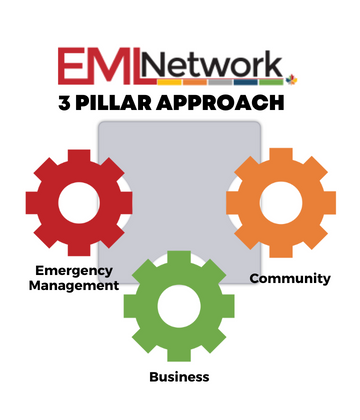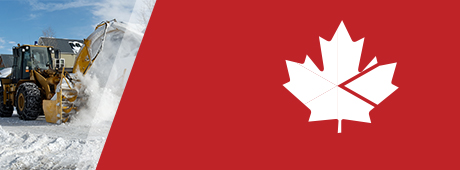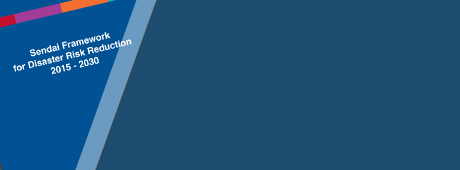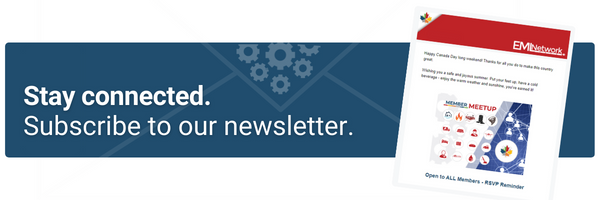
CREATING A NETWORK OF CONNECTION
Emergency Management Logistics Canada believes in the power of connection and collective action. It is the better way to improve disaster response readiness, capacity, and resilience in Canada.
The EMLNetwork is more than a collection of contacts and basic directory. It is a movement that combines capacity building and shared connection.
It is a commitment to getting ready together and to “be there when my community needs me – maybe tomorrow, maybe next month, or maybe three years from now.”
For businesses and voluntary organizations that want to support local preparation, response, and recovery efforts, the EMLNetwork is where they can let their intentions be known.

ONE SIMPLE PRINCIPLE
We had an idea. When everyone builds and updates their own profile, communities can always access current information – working together, everyone wins. Emergency management teams tasked with logistics support, businesses of all sizes, and ultimately communities across Canada – protecting lives, property, infrastructure and reducing avoidable stress during stressful situations.
We’ve integrated two pledges into the membership process that asks members to do two things:
STAY CURRENT
This business or organization commits to keeping EMLCanada’s one simple principle – that our contact details and profile information will stay up-to-date and current.
STAY CONNECTED
Agree to receiving bi-monthly login reminders and monthly newsletters to stay current and connected, plus other relevant member notifications to test this emergency management logistics system.


REPLACING SILOS WITH BRIDGES
Silos…great for grain, not so much for communities.
The EMLNetwork enhances social capital and helps emergency management organizations, business, and community organizations connect with one another, by building bridges.
We know that time is a precious commodity. Developing connection, and building these bridges, takes time and the ability to do this seems overwhelming with available resources. We can help.
In emergency management, the Logistics Section is sometimes referred to as “the getters” – they find and source the products, services, and supports needed on the front lines, across operations, and within receiving centres for evacuees.
The longer it takes the Logistics Section to find what is needed, the longer it takes to put out the fire, stop the floodwaters, feed the evacuees, or help to restore the community.
Current and informative profiles on the EMLPlatform help Logistics Sections find what they need when they need it – something we can all contribute to helping.
TAKING A WHOLE OF SOCIETY APPROACH
Building community, strengthening trust and relationships, and giving back are central motivations underlying EMLCanada.
Emergency Management Logistics Canada strives to build capacity within the sector to enhance preparation, response, and recovery.
We subscribe to the 3 Pillar or “whole of society” Approach – a movement that combines capacity development services with an online platform for emergency management organizations (EMOs), businesses, and community organizations to network, share information, and find resources.
Within this coordinated approach, we also have these bold objectives: to grow connections; provide access to logistics tools; and, advance education, training and standardization within the sector.


EMERGENCY MANAGEMENT
Emergency management organizations (EMO) are public and industry sector organizations with legislated responsibilities for planning, preparation, response, and recovery efforts in disaster situations.
This category also includes highly trained emergency management professionals accessible through national non-governmental organizations (NGOs) such as the Salvation Army, Red Cross, and Samaritan’s Purse.

BUSINESS
Products, services, and supports available through the private sector are listed in the EMLPlatform under the business category.
Local businesses are invested in their communities, have products and services readily accessible, and larger scale businesses can tap into existing supply chains to support local logistics efforts.
Purchasing locally helps to stimulate the economic recovery following a disaster, while supporting bigger players at the same time.

COMMUNITY
The community sector includes voluntary organizations, non-profit, and charitable groups – many of whom have access to people, facilities, amenities, and specialized skills – especially in the area of human services.
AN INNOVATIVE TOOL FOR CONNECTION
EMLPlatform
The EMLPlatform is where emergency management organization, business, and community profiles are stored and accessed.
The site contents are searchable by location, type, kind, and keyword to help ensure that you find what you need when you need it.
The EMLPlatform also provides simple and immediate access to EMO, business, and community organization dashboards for quick and timely updates.
Logistic Tools
The team at Emergency Management Logistics Canada have applied their direct field experience in emergency management to the development of critical logistics tools.
Notify your preferred business and community contacts when a situation arises using the activation tool, and then manage their offers of support right from your dashboard.
Looking for products and services that aren’t on your preferred resource list? No problem, the search and source tool lets you look beyond your own boundaries to find resources farther afield.
Marketplace
The EMLPlatform isn’t just for disasters, it’s an economic development generator.
Check the Marketplace regularly for available resources, featured products, equipment, facilities, supplies and services, and special offers from businesses and community organizations with listings on the site.
Nurture local relationships by supporting those invested in building emergency management capacity and resilience.
ALIGNED WITH EXPERT INSIGHTS AND RESEARCH

Sendai Framework
Globally, the Sendai Framework for Disaster Risk Reduction (2015-2030) represents the United Nation’s commitment to provide a concise, focused, forward-looking, and action-oriented framework to help build local capacity and resilience.
The community development approach behind the EMLNetwork fully aligns with and animates the intentions of the Sendai Framework.

Canadian Strategy
Canada’s federal, provincial, and territorial government collaborate and share emergency management responsibilities under the Emergency Management Strategy for Canada: Toward a Resilient 2030.
The EM Framework reminds us that the first response is almost always the local authorities or at the provincial or territorial level because disaster occur most often locally.

After Incident Reports
Our own Canadian experiences chronical the need for a better system to get what we need when we need it.
Logistics challenges frequently appear in after-incident reports following significant disasters across the country – and rightfully so.
The old way of creating and updating accurate, searchable, and current resource lists is time consuming and, as a result, often falls off the corner of the desk when local emergency management organizations attempt to juggle competing demands.

Community Engagement Process
Canada’s social policy on emergency management relies heavily on local jurisdictions to be on the front line of disaster situations. To succeed, local jurisdictions (i.e. municipalities, counties, First Nations, etc.) must have access to local resources.
The process of community building begins with informed and motivated emergency management organizations, businesses, and community organizations indicating their support for a collective approach – they do this by building and maintaining profiles on the EMLPlatform and inviting others to join.
This creates local and regional networks and ultimately the EMLNetwork will stretch across Canada – from coast to coast to coast.
We all know that Canadians come together to help one another in times of need. The EMLNetwork is an extension of that willingness to help – connecting to help build capacity and resilience.
Engagement Outcomes
It is often said, “the middle of a disaster is not the time to be exchanging business cards!”
The EMLNetwork builds community capacity and enhances local resilience by connecting people, products, businesses, and organizations in advance of disaster situations – connections and relationships that can be called upon during times of need.
We know things are always changing. Keeping up can be hard to do. The EMLNetwork is designed to put the power and responsibility for updating information into the hands of the Network members themselves.
Our simple principle relies on network members to build and maintain their own current information.
This principle is consistent with our community development approach – everyone working together for the good of the community.









